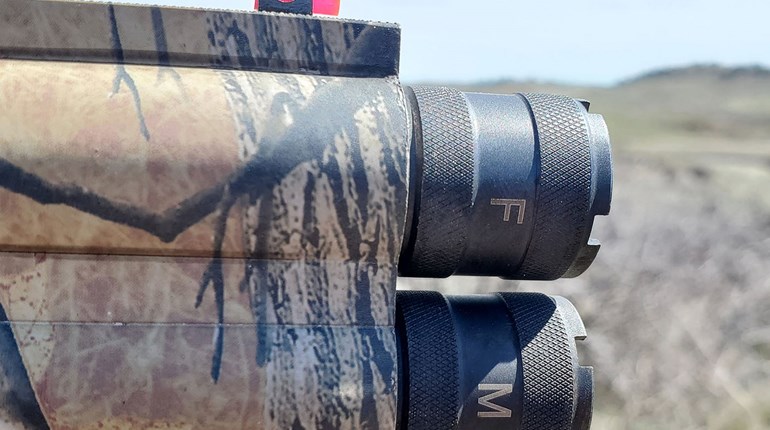
Did you know you can ship guns across the country? Yep, I’ve done it several times—usually to send a gun back to a manufacturer to have work done on it, but I’ve also mailed a gun to myself in advance of a trip so I didn’t have to fly with it to my destination. Mailing a gun isn’t overly difficult, but it can be a real pain if you don’t know the tricks to doing it properly. You can’t just slap a label on a gun and ship it to whoever you want. Here’s how you ship a gun, legally.
Who Can You Ship To?
An FFL Dealer: If you’re sending a gun back to the manufacturer, they will have their own Federal Firearms License. Any business that sells guns is required to have an FFL, and thus they are able to accept firearms shipped directly to them.
An Individual, Through a Dealer: If you’re shipping the gun to someone else and transferring ownership, even temporarily, this transfer must take place through an FFL holder. Say you sell a gun in an online auction and need to get it to the buyer across the country. You cannot mail the gun to their home unless they happen to have an FFL (some individuals do, although it’s rare). You must mail it to an FFL dealer near their house and they will have to go pick it up there, filling out the appropriate paperwork.
Yourself: If you’re going on a hunt or some other trip where you want your rifle or shotgun (not a handgun as far as I can tell), you can ship it to yourself before you leave. If you’re heading somewhere that has an FFL, perhaps a well-equipped shooting school or outfitter, no problem. If not, you should ship the gun to yourself but “in the care of” another person at your destination, but they are not allowed to open the package—only you, the owner, may do so. To be safe, I recommend you time things so that you ship the gun and then arrive at your destination before it does so you can take possession/delivery of it. Needless to say, you should clear this with the person at your destination first. Don’t assume the desk clerk at the Holiday Inn Express at your destination is cool with a gun being mailed there unannounced.
What Carriers Can You Use?
FedEx: If you don’t hold an FFL yourself, you cannot ship a firearm with FedEx. If you do hold an FFL, you must be a FedEx “approved firearm shipper” with a signed contract on file.
DHL Express: DHL does not ship firearms, period.
UPS: According to UPS’s website, you cannot ship a firearm or “firearm products”—which does not include scopes but does include barrels, stocks, grips, firing pins, magazines and (inexplicably), sights—unless you are federally licensed (I assume this means you hold an FFL) and have a specific approved UPS agreement for transportation of firearm products.
U.S. Postal Service: If you don’t have your own FFL or work for certain government agencies, you cannot mail a handgun (with some rare exceptions, like museum pieces) through USPS. You can mail a rifle or shotgun as long as they cannot be “concealed on the person.” USPS will allow you to mail a long gun to yourself as discussed above, or to an FFL dealer. You’ll need to ship it via a USPS method that has tracking and requires a signature on delivery. The Postal Service might ask you to open a package containing a firearm to verify that it’s unloaded, or you might be required to sign a document certifying that it’s unloaded and not concealable.
USPS does not specify whether you can drop off a properly labeled package containing a gun at your local Post Office or if you need to set up a delivery. I recommend calling your local Post Office directly to ask how they prefer to receive a firearm for shipment.
General Notes
The ATF requires you to notify the carrier that your shipment contains a firearm and prohibits carriers from putting any labels on the package that would indicate that it is a firearm.
Obviously, you should ensure the gun is unloaded and package it carefully. If you’re shipping a long gun to yourself, it’s a good idea to ship it in a hard-sided case. If you’re shipping in cardboard, be sure to use enough bubble wrap that the firearm won’t rattle around inside its box, and check your chosen carrier for their packaging requirements. If you’re shipping a gun in the original manufacturer’s box it came in, I recommend purchasing some inexpensive brown wrapping paper to cover the box so it is not immediately identifiable as a firearm.
Do not ship any ammunition with the gun; ammo has its own set of shipping rules and must travel separately.
Carriers change their policies, so while the information in this article was current as of December 2022, you should check each carrier’s website to be sure their policies haven’t been updated.
If you’re shipping to an FFL holder, ask them ahead of time if they require any specific paperwork to be sent with the gun.
The advice in this article applies only to domestic shipping. Non-FFL holders cannot ship a firearm internationally.














































